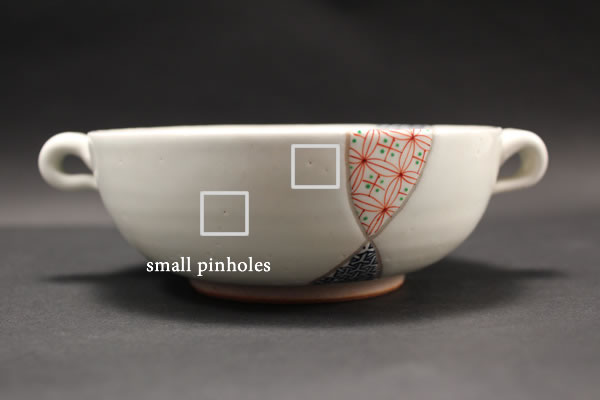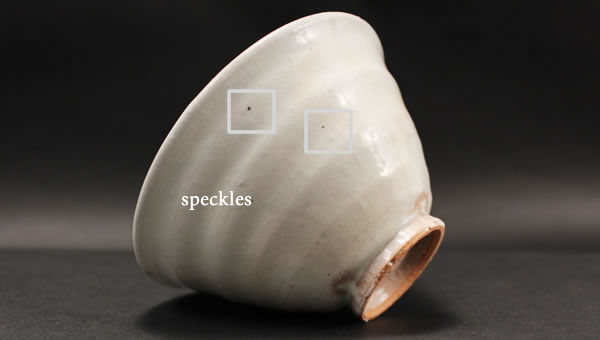We spread genuine Japanese goods and traditional culture to worldwide.
Font size:
Categories
 |
| Japanese pottery FAQs difference from pottery to porcelain There are 2 kinds of Japanese pottery basically consists of 2 types. One is pottery, also called “earthware”, made from clay, and the another is porcelain, also called “stoneware”, made from a stone powder. (There is other type, semiporcelain which is a combination of cray and a stone powder.) It seems same, but pottery and porcelain are markedily dissimilar in a number of respects. Most notable differences are materials, hardness, color and the way to care. Porcelain is easy to care since it is very hard and impervious to water. Most daily use ceramics are porcelain. On the contrary, pottery is porous and absorbs water. So it needs to be soaked in the water before use. It needs more care, but gives you a warm feeling and the detailed sense of beauty of the Japanese. Some speckles or small pinholes are found? It is one of the decorative techniques using specific materials. Some materials melt partially leaving a mark or expand somewhat, becoming a rough, mat, speckled surface, which is called as “Sesami seed fire decoration” and “Stone bursting”. Small pinholes decoration is formed by melting glaze during firing and leaves a minute pit. Or some may be caused accidentially during firing. The wood-ash that swirls in the kiln combines with the feldspar in the clay and vitrifies, producing a natural wood ash graze. called as “Suana”(next hole) or “Yuzuhada”(citron skin). A pottery artist leave these on purpose as handworked decorations, the tasts of uniqueness.  
How to smooth a rough surface of the foot? You can sandpaper down. Or frictioon a foot of pottery with another. |

